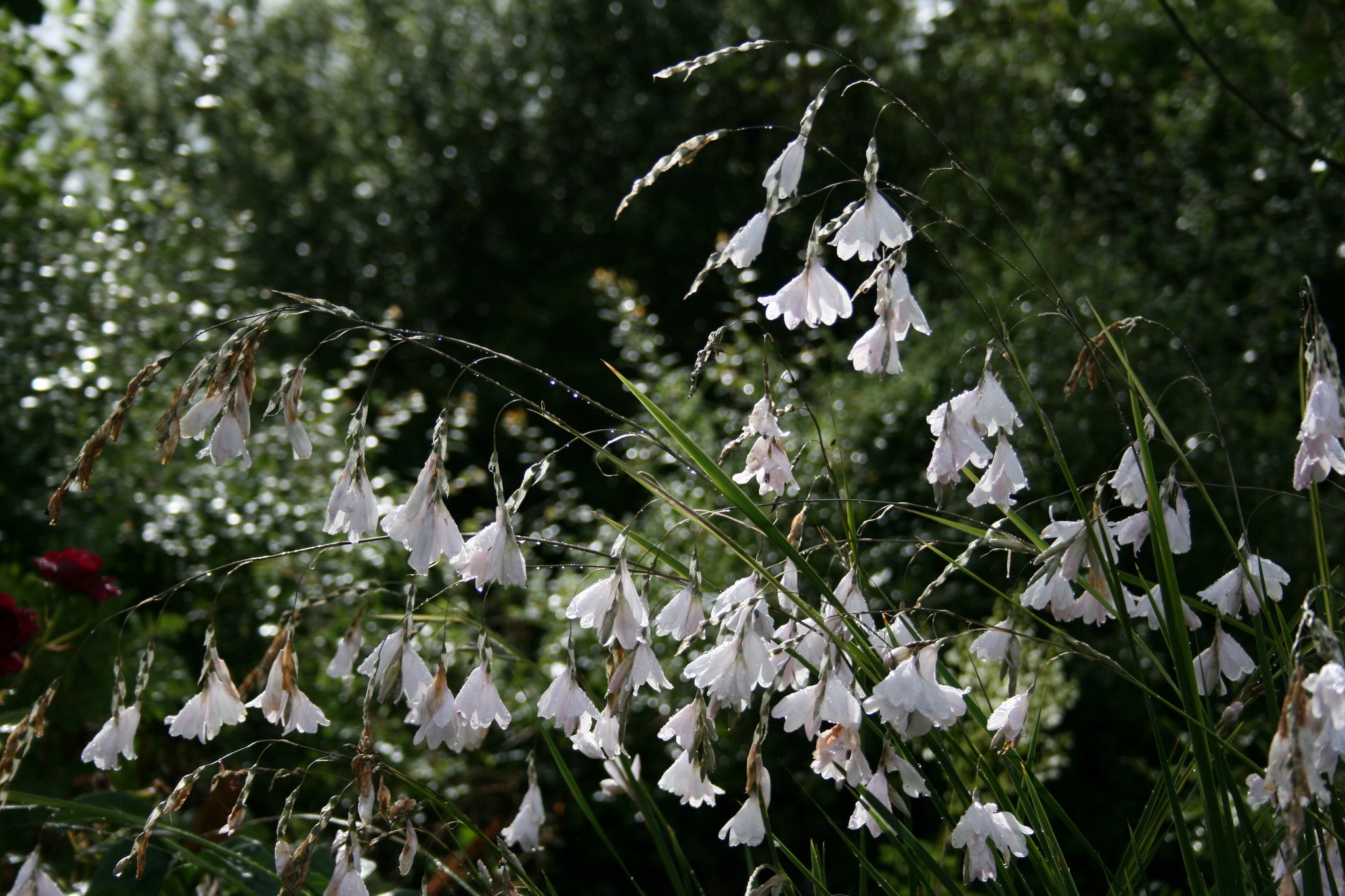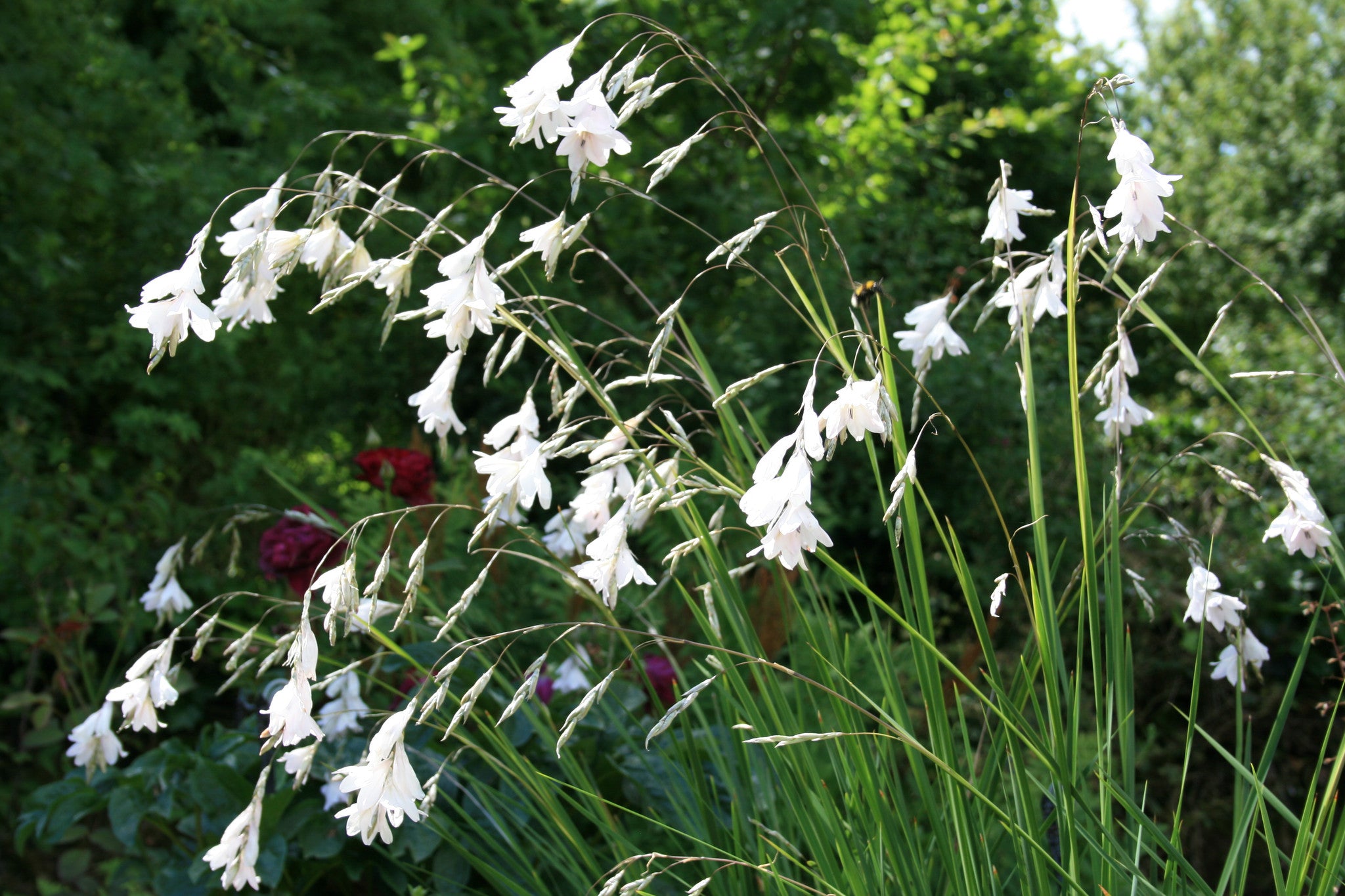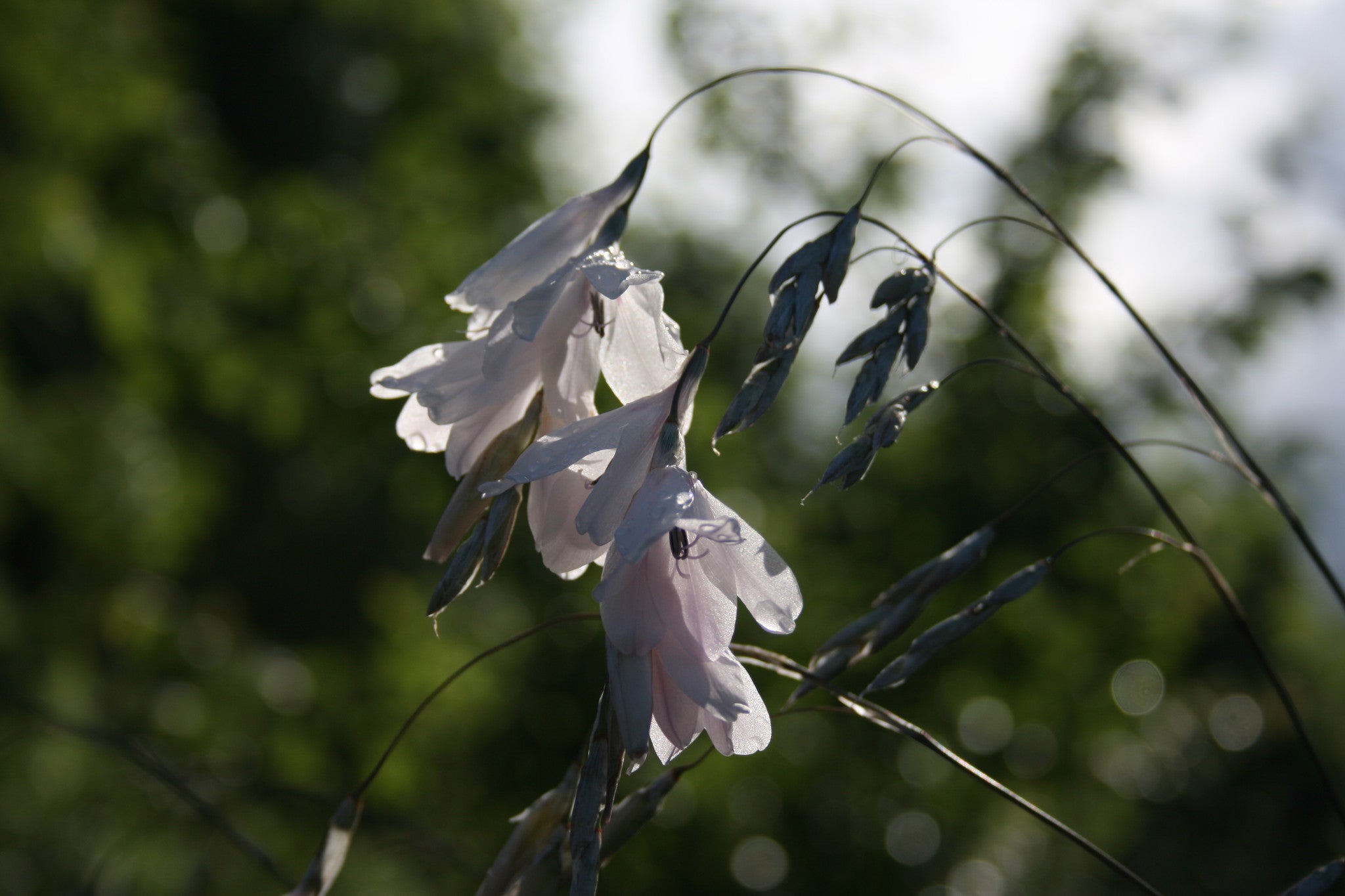Dierama 'Guinevere'
Approx. 0.5 litre pot
About this cultivar:
Dierama 'Guinevere' is a wonderfully beautiful cultivar. Tufts of grassy foliage send up masses of pure white flowers hanging from 'fishing rods'. Even on the calmest of days they sway back and forth in the breeze, as if the foliage is listening to some classical music!
- Position: Full sun, partial shade
- Soil: Almost any soil, grows well in Ballyrobert
- Flowers: June, July, August
- Other features: Grows well in Ballyrobert, Cut Flowers or Dried Flowers
- Hardiness: Fully hardy - grows well in Ballyrobert!
- Habit: Bushy, clump forming
- Foliage: Evergreen
- Height: 75 - 105 cm (2.5 - 3.5 ft)
- Spread: 60 - 90 cm (2 - 3 ft)
- Time to full growth: 2 to 5 years
- Plant type: Herbaceous Perennial, grass like
- Colour: Green, white
- Goes well with: Grasses, Iris, Nepeta, Lavendula
About this genus:
Dierama is a genus of flowering plants in the iris family (Iridaceae). Because they are so beautiful you would think the name comes from "to die for" but it is a bit more boring than that; it is derived from the Greek word Dierama, meaning "funnel", and alludes to the shape of the flower. Long known to gardeners, the species Dierama pendulum was first collected in 1772 by the Swedish naturalist Carl Peter Thunberg, although the genus Dierama was first established by the famous German botanist Karl Koch (1809-1879). Common names of various species include harebells, fairybells, wandflowers, and, of course, angels fishing rod.
Dierama are evergreen perennials growing from large, fibrous-coated corms. The inflorescence is a panicle of several spikes of flowers. The spikes may hang like bells or grow erect - however most gardeners are familiar with the hanging species like Dierama pendulum or Dierama pulcherrimum; most commonly known as angels fishing rod.
Most of the Dierama species we have are pendulum, pulcherrimum or some hybrid of them. We grow them almost everywhere in our garden at Ballyrobert and as the fishing-rod name would suggest, they do well in wet areas. However they don't like being moved around or being in pots. Full sun or part shade in fine, many are slow growing so be patient!
Good plant partners include their close cousin Iris and some grasses (in fact when it is not flowering many people confuse Dierama with a grass!). We also experiment with Nepeta and Lavendula.






